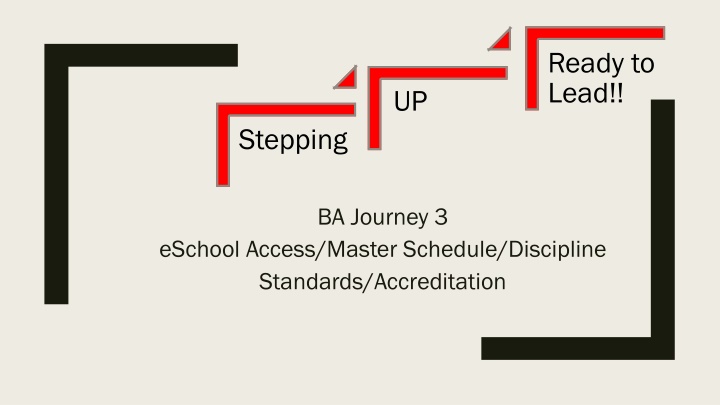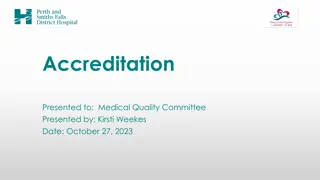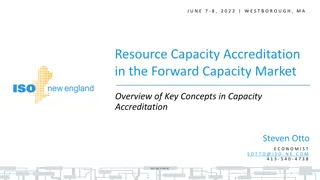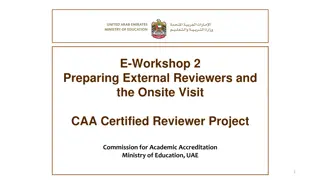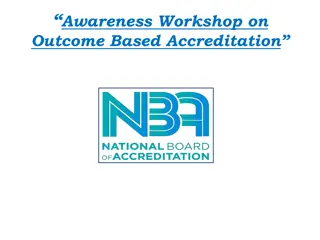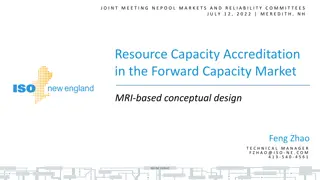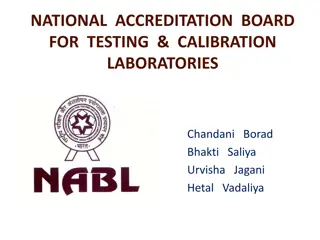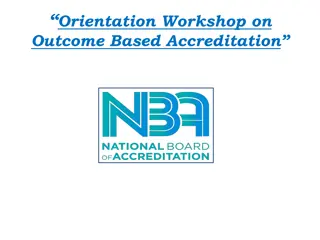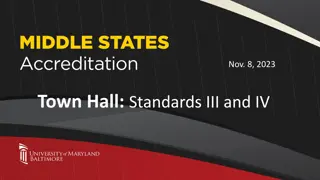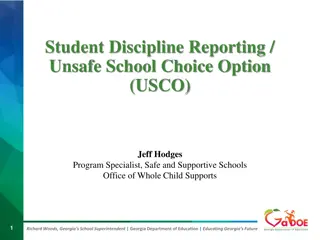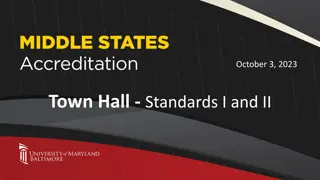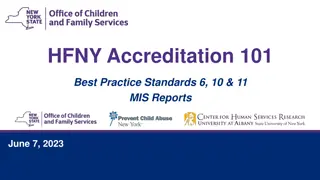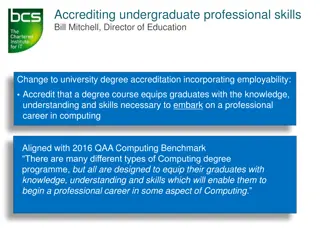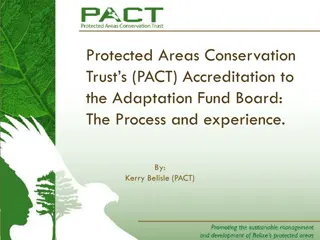Accelerate Your Leadership Journey: eSchool Access, Master Schedule, Discipline Standards, and Accreditation
Embark on a transformative journey toward effective leadership in education with a focus on eSchool access, mastering schedules, discipline standards, and accreditation processes. Discover practical resources, norms for success, and essential guidelines to enhance your impact in school administration. Uncover key insights on managing disciplines, attendance, and leveraging technology for accurate reporting. Equip yourself with the necessary tools to lead with excellence and drive positive change in your educational institution.
Download Presentation

Please find below an Image/Link to download the presentation.
The content on the website is provided AS IS for your information and personal use only. It may not be sold, licensed, or shared on other websites without obtaining consent from the author.If you encounter any issues during the download, it is possible that the publisher has removed the file from their server.
You are allowed to download the files provided on this website for personal or commercial use, subject to the condition that they are used lawfully. All files are the property of their respective owners.
The content on the website is provided AS IS for your information and personal use only. It may not be sold, licensed, or shared on other websites without obtaining consent from the author.
E N D
Presentation Transcript
Ready to Lead!! UP Stepping BA Journey 3 eSchool Access/Master Schedule/Discipline Standards/Accreditation
Norms Pull your own happy wagon or misery is optional Take care of your personal needs when necessary Silence Cell Phones and limit cell phone interruptions Stay actively engaged Limit sidebar conversations
Potato Activity
Objective Resources Master Schedule Discipline Attendance Standards Master Schedule Development eSchool Discipline Attendance Standards eSchool Mobile App Cognos Reports
Location of Resources -Master Schedule -Discipline -Attendance www.apscn.org Username apscn Password docs SIS and SMS SIS Handbook Cycle Submission Page 3-5 Discipline 35-36 Scheduling 137-138 CC #ing system SIS Conversion Chart Page 1-3 Behavior(Discipline) Entry Page 1-16 Cognos Reports Descriptions Discipline Page 24-25 Attendance Page 4-5, 7 Master Schedule Page 39-40, 45-46 SMS Require fields Entry/WD Page 24 Attendance Page 25 Discipline Page 26-28 Scheduling Page 29-32 Rules Teaching Load Document K-8 Course Checklist ADE Standards for Accreditation Behavior/Discipline Training Discipline Overview Page 5 Widget Page 6 Student Attendance/Discipline Action Page 22 Adding Behavior incident Page 27 Simple Step Adding new Incident Page 34 Incident Action/Attendance Report Page 57 Ade348 AESAA Student Cycle Reporting PowerPoint Improving Accuracy of Accreditation Reporting PowerPoint Required 38 eSchoolPlus Scheduling Procedural Outline
Review of packet contents Part 1 Master Schedule Resources Part 2 Discipline Resources Part 3 Attendance Resources Part 4 - Improving the Accuracy of Accreditation Reporting PowerPoint Data submission and cycle reporting eSchool Mobile App Each districts ESCHOOL admin should have the passkey for the admin app. If they don t have the passkey, they can call into the help desk (1-800- 435-7989) or contact their APSCN field rep (Coop eSchool person) to get it.
Scheduling Training Guides and Procedures for eSchool www.apscn.org Username apscn Password docs
Table talk Review Find Part 4 of packet Take 15 minutes to review the contents of Part 4 Accreditation Cycle reporting Standards Annual Accreditation System at ADE Data Center 15 minutes to discuss learning with table group Questions for Dr. Smith regarding Standards
Master Schedule Development The master schedule is to a school what grading policies are to teachers and classrooms. It reveals the true beliefs, attitudes, values, and priorities of the school. The school s master schedule is like looking at an MRI of the inner workings of a school. It is the window to the soul of the school. The Master Schedule: A Culture Indicator If the Master Schedule is done well, it supports the vision for learning and teaching in the district, school, and pathway. If the Master Schedule is poorly done, the result is frustration for students, for teachers, and for parents, and it will have a detrimental impact on your school program, and a road block for delivering instruction.
The Instructional Leader How students and staff spend their days in your building is your responsibility! Design, maintenance, and management of your master schedule needs to fall squarely on your shoulders. It is not okay to absolve yourself of the strategic thinking and decision making in your schedule s design. Communicate to the adults that student needs come first . Are your most qualified, superstar veterans willing to let go of an honors literature section and take on reading intervention? Start early What s working for our students? What s not? Teams of teachers write their individual ideas on sticky notes, and we group these together to determine larger themes. Create a timeline for key conversations; ensuring transparency to everyone involved. Make it clear about how you will gather input, who will be included in decision-making (leadership team), but that you will make the final decisions. Share that you would like to grant everyone s wishes, but that would be impossible (examples here). Which programs or positions need to change to get better student results and meet their needs better. Determining priorities get leadership team to help in determining priorities. What is an essential priority; what is an important priority What are things we want but may not be what is best for students Design the bones of the schedule, taking in consideration the gathered input, determined priorities; then share with the leadership team, then with teachers, showing them how their day would look and how students might look.
Principal/Asst. Principal Responsibilities Refer to handout
Counselor/DP Clerk Responsibilities Refer to handout
Master Schedule - Where do I start? Developing the FTE Allocation What historical data on enrollment do you save and utilize for your school/s? How accurate have projections been in the past? After each site has its projections How might the District and site/s best work together to finalize the FTE Allocation? Goal: To not add or take away sections once school begins Goal: To not change students schedules once school begins Goal 100% of students are scheduled correctly on the first day of school based on his/her learning needs and in accordance with local, state, and federal requirements. Decisions to be made - Counselor(s), DP Clerk, Administrators Who can create and delete sections The master schedule is a major factor in creating a school climate Discipline Class size, teacher-student relationships Parents perceptions
Research District Protocols ESL Math Reading Tier 2 and 3 requirements School Scheduling Team Identify members Tasks specific to each member Communication Best placement for all students Eliminate conflicts Teacher assignments and sharing the load Provides best instruction for all students Eliminates favoritism Teacher planning time and common planning time consideration
What does a good master schedule look like? Students placed appropriately Data driven test scores, grades, teacher recommendations, graduation requirements Remediation Tier 1, 2, 3 Acceleration Pre AP, AP, Dual Credit CTE opportunities, Music, Athletics, Theater, etc. (Students can take classes they choose) Teacher assignments based on data (certifications and expertise, etc.) Teaming common planning periods, same students, departments, grade level, etc. Input from all involved Dept. chairs, grade level leads, team leaders, counselors, etc. Rooms and resource utilization efficient and effective No wasted time Students are supervised at all times
How does your master schedule contribute to the academic performance of all students? Considering classes, teachers, graduation requirements, student interests/goals Flexibility for course recovery Available PreAP, AP classes, Dual Credit Appropriate remediation and support available Students can and will achieve!
Important things to consider: Special programs, ESL, foreign languages, SpEd, advanced classes, CTE, RTI, blocked classes, GT, AP, Pre AP, Athletics, Band Singletons Team Teaching Teacher certifications Teacher class load Teacher requests, teacher pre periods, number of teacher aides Structure of school, classes arrangements, number of classrooms, etc. Single Gender classrooms Flipped Classrooms, Blended Learning Classes Gay/Transgender students, high discipline students (student to student conflict) Virtual Classes Start and end times Transportation schedule Lunch periods, size of cafeteria
6 Stages to building a master schedule: Stage 1. Courses -- deals with your current course information. In this stage you will remove any courses that are no longer being used and add new courses for the upcoming school year. Rollover master - Important Note: You do not need to remove the existing master schedule from the previous year! (i.e. you do not need to remove the periods the course are taught.) usually around January - February Stage 2. Registration -- loading the students into their courses. The required courses are quickly bulk loaded and the electives can be entered using Online Registration or Add Courses. Student Request Verification Report Student Request Detail Stage 3. Analyzing the Registration -- deciding how many sections of the courses you wish to offer and also filling in any constraints you have in your courses. Simple Tally Report look for errors; determine sections and classes to offer Stage 4. Building the Master Schedule -- using the Scheduling Aid to build a master schedule. Create new course sections; delete sections; move sections around to balance classes Build Master Schedule Stage 5. Conflicts -- The 5th stage involves analyzing your student conflicts. Student Conflict Analysis Report Stage 6. Clean-up/Balancing/withdrawals and new enrollees -- Lock schedule in **Helpful Tools** Included is screen shots to help you remember what to run and how to run the reports
Reflection and Feedback Simple Truths
